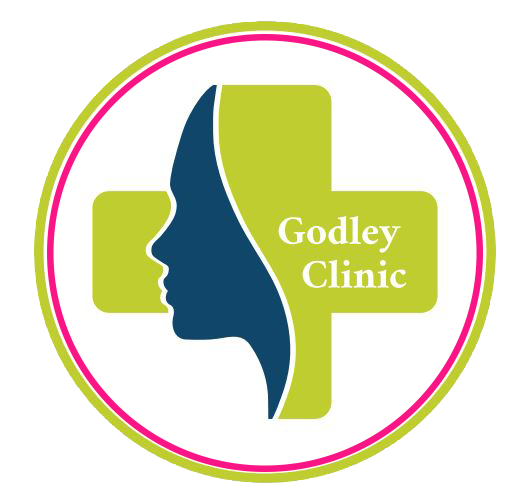How Many Units of Botox Do I Need? Abbotsford Guide by Treatment Area
Dr. Mark Godley during a patient consultation.
Thinking about getting Botox at our Abbotsford clinic with Dr. Mark Godley?
In this post, we’ll walk through the three most commonly treated areas, what 20 units might cover, when people typically start, and answers to the most frequently searched questions about Botox in BC.
What is the average price of Botox in BC?
The average cost of Botox in British Columbia typically ranges from $10 to $15 per unit. The total cost depends on several factors, including the number of units used, the areas being treated, and the experience of the provider.
While price per unit is often similar between clinics, what matters most is the expertise of the injector — not the syringe itself. A skilled provider will take into account your facial structure, muscle strength, and how your expressions move across different areas of your face. This helps ensure dosing and placement are tailored to you, supporting both safety and subtle, balanced results.
A consultation is the best way to determine how many units may be appropriate for your needs and what the total cost might be.
Many people ask about 20 units as a reference point, but how those units are used, and where they’re placed, can make all the difference.
How much will 20 units of Botox cover?
Twenty units of Botox may be enough to treat one to two smaller areas, depending on your facial anatomy and muscle strength.
Here’s a general breakdown:
Frown lines (glabella): 15–25 units
Forehead lines: 10–20 units
Crow’s feet: 6–12 units per side (12–24 units total)
In most cases, 20 units might be used to treat the frown lines alone, a lighter dose across the forehead and frown lines, or a gentle treatment for the crow’s feet.
Dr. Mark Godley explains:
“My preference is always that a patient comes in asking for a particular outcome, rather than requesting a specific number of units. Botox shouldn’t be seen as a commodity or just a unit—it’s a medical procedure that should aim to deliver the result they’re hoping for. I believe it’s the practitioner’s responsibility to guide that process, attach the appropriate cost, and work toward achieving the outcome the patient desires—not just count units.
What age is best to start Botox?
There’s no fixed age that’s considered “best.” Botox is used by adults across a wide age range based on their goals and personal preferences.
Common patterns include starting in the late 20s to early 30s as a preventive approach, beginning in the 30s or 40s when expression lines become more noticeable, or choosing to try Botox later in life depending on individual goals.
A consultation helps determine if and when Botox is suitable based on your unique anatomy and preferences. Learn more about Botox in Abbotsford.
What is the biggest risk of Botox?
Botox is generally well-tolerated when administered by a qualified provider. That said, all medical treatments carry potential risks.
The most common side effects include temporary bruising or swelling at the injection site, mild tenderness or headache, or localized asymmetry.
More serious but rare side effects may include eyelid drooping or allergic reactions. It’s important to speak with your healthcare provider about your medical history and any concerns before treatment.
What is cheaper than Botox?
Some over-the-counter or topical options may be lower in cost, but they do not work the same way as Botox. These include products like retinoid creams, peptides, or antioxidant serums, which may support overall skin health but won’t affect muscle movement.
Other in-clinic treatments, such as microneedling or regenerative options like PRP and PRF, are typically similar in price or more expensive than Botox, and they address different concerns, such as skin texture or collagen stimulation rather than muscle-related lines.
Choosing the right option depends on your goals and what you’re hoping to improve.
How long does Botox last?
Botox typically lasts 3 to 4 months, though the exact duration can vary based on individual factors such as muscle strength, metabolism, how many units were used, and whether it’s your first time or a repeat treatment.
Some individuals notice results begin to fade slightly earlier, while others find the effects last longer with consistent use.
What Are the Best 3 Areas to Get Botox?
The three most commonly treated areas are:
Forehead Lines - These horizontal lines develop from raising your eyebrows. Botox is often used here to reduce the appearance of movement lines.
Frown Lines (Glabellar or “11s”) - These vertical lines between the eyebrows are common when squinting or concentrating. Treatment can reduce the appearance of these lines by relaxing the underlying muscles.
Crow’s Feet - These fine lines at the outer corners of the eyes tend to appear when smiling or squinting. Botox can be used to minimize their appearance.
Book your consultation in Abbotsford or Vancouver
At Godley Clinic in Vancouver and Abbotsford, consultations are available to help you understand if Botox is right for your goals. Every treatment is performed by Dr. Mark Godley, a physician with decades of experience in facial aesthetics.
Botox is a prescription treatment and may not be suitable for everyone. Dosage and treatment areas vary by individual. A consultation with a qualified healthcare provider is required to determine what’s appropriate for you.



